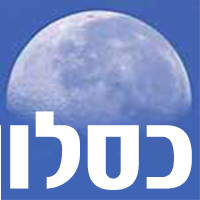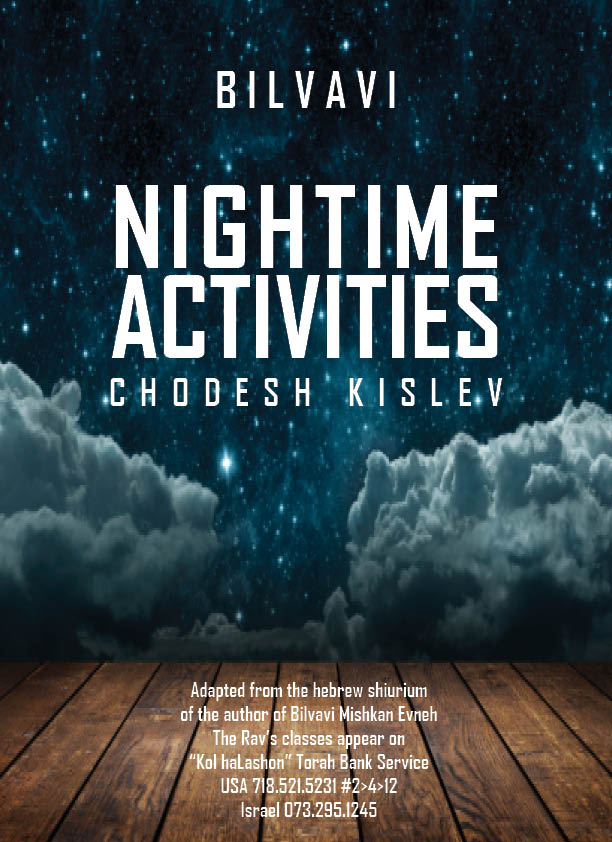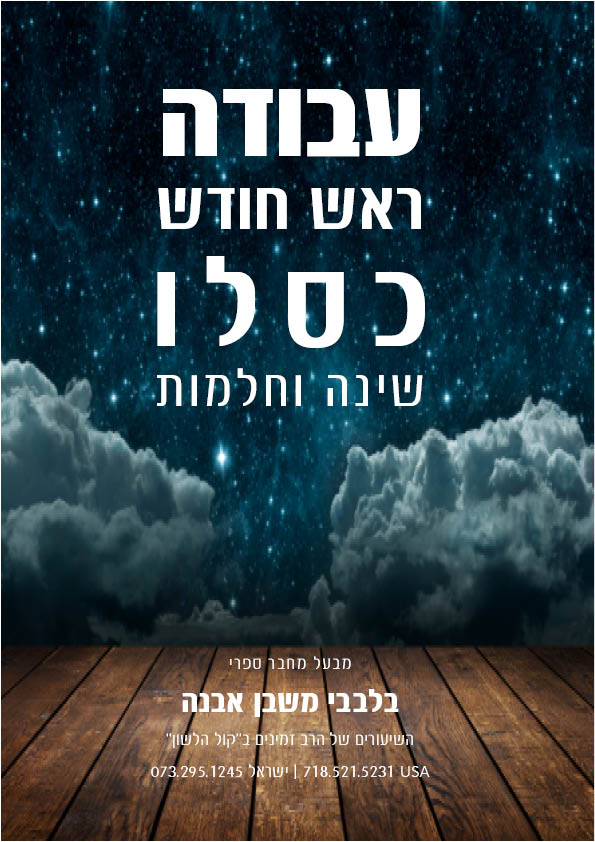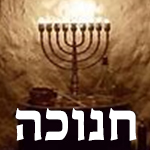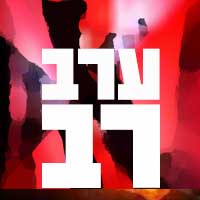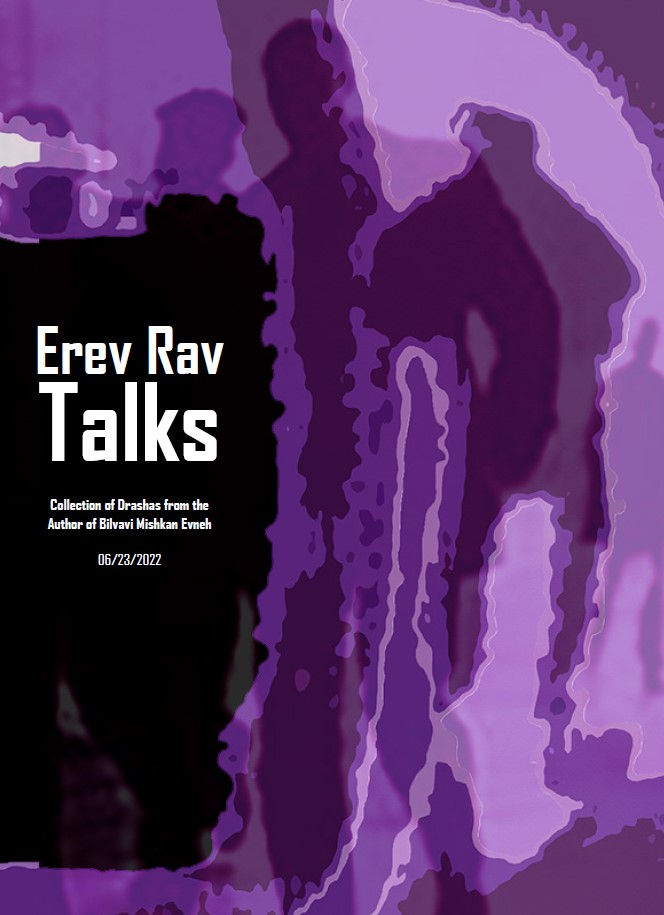- להאזנה ראש חודש מזל 010 תשרי מזל מאזנים
010 Tishrei | Scale
- להאזנה ראש חודש מזל 010 תשרי מזל מאזנים
Rosh Chodesh Mazal - 010 Tishrei | Scale
- 5707 צפיות
- גירסה להדפסה
- שלח דף במייל
The Mazal of Tishrei: Moznayim (Scale)
The mazal of the month of Tishrei, as is well-known from the words of Chazal, is “moznayim”, the [Heavenly] “scale”.[1]
The Ramban explains that the connection between the moznayim\scale and the month of Tishrei is because “It is a time of din (judgment), when Hashem weighs all the deeds of people on a scale (a moznayim).” Let us reflect more into this, to understand what the depth of this is - besides for the simple meaning of it, which is that Hashem weighs all of man’s deeds on a scale.
Moznayim\Oznayim\Ears – A Higher Mode of Conduct Than Af\Nose
The word moznayim is from the word oznayim, “ears”. The ears are in a higher place of the body than the nose.
When one is a tzaddik and he does the will of Hashem, he gives a nachas ruach[2] to Hashem, which is like a pleasant “smell” to Hashem, whereas the rasha[3] gives off a “foul odor” to Hashem through his evil deeds. The nose is called af, and Hashem’s anger is also called af. One of Hashem’s traits of mercy is that He is “maarich apo”, He delays His anger, both towards the tzaddikim and towards the reshaim. How does Hashem delay His anger, His af? It is clear that He uses His trait of erech apayim, when He makes Himself slow to anger (as it were), towards reshaim. But how is Hashem maarich apo even towards tzaddikim? This matter is explained as “Hashem stretches out His af (His “nose”, so to speak), to His oznayim (His “ears”, figuratively speaking).
This means that Hashem uses a different mode of conduct, switching from the mode of af to the mode of moznayim. This is the mazal of moznayim of Tishrei. Hashem’s merciful trait of erech apayim is thus the revelation of His mode of conduct called oznayim (“ears”), from the word moznayim.
Moznayim Is Kaf HaMedameh – The Imagination
In order to understand this concept better, we will need to examine the words of the Gemara: “In the future, Hashem will slaughter the evil inclination. To the wicked, the evil inclination will appear like a hair, and to the righteous, the evil inclination will appear to be like a mountain.”[4] In either case, the Gemara says that the evil inclination “appears”, it is nidmeh, to both the righteous and the wicked. The word nidmeh is, related to the word medameh, imagination, implying that both the righteous and the wicked experience the evil inclination in terms of the imagination.
Nidmeh\fantasy is also called “kaf hadimyon”. The letter kaf in the Aleph Beis represents the concept of imagination, because imagination makes things appear to look “like” something else, and the letter kaf of the Aleph Beis implies the term “like”. Therefore, the letter kaf is referred to as kaf hadimyon – the letter that implies the concept of imagination.
In a scale, a moznayim, there are two sides – a kaf yemin, the right side of the scale, which symbolizes merits and righteousness, and the left side of the scale, the kaf sm’oel (also called kaf chovah) which symbolizes sin and wicked deeds. Any time where we find the term kaf, it implies kaf hamedameh – the use of the imagination. This implies that the moznayim, the scale, is an example of kaf hamedameh.
The kaf hayemin, the right side of the Heavenly scale, weighs the merits of tzaddikim, and the kaf sm’oel, the left side of the scale, weighs the acts of the wicked. On a simple level, it is the righteous acts of the tzaddikim weighed against all of the evil fantasies of the wicked which fuel their wicked deeds. The kaf moznayim, the Heavenly scale, is the point in the middle that weighs the two sides.
However, since the “kaf” moznayim (the scale) is an example of “kaf” hamedameh (the imagination) –for they are both in the category of “kaf” - this implies that even when the kaf (the middle part of the scale) is pointing towards the side of the kaf yemin, the side of the tzaddikim, it is not a true judgment - for it is ultimately a kaf hamedameh, a scale that weighs good imagination versus evil imagination. It is all within medameh, the imagination, and therefore it is not a true judgment.
Hishtavus\Equality – Through Nullifying The Will
The Gra says an amazing insight, that those who are in the category of beinonim are the very “scale” that decides between the righteous and the wicked, and therefore, in this aspect, the beinonim are on a greater level than tzaddikim. Certainly, the Gra does not mean that beinonim are on a higher spiritual level than tzaddikim. But there is definitely an angle where the beinonim are at a higher level than tzaddikim. In what way are the beinonim at a greater level than tzaddikim?
The Chovos HaLevovos says that the greatest quality is hishtavus, to be equal, between two different sides. One’s avodah is not merely to become more leaning towards good, but to be at an equal stance between the sides of good and evil. Why? The Rambam says that a person’s main avodah is to stay in the middle between two extremes. In order to improve, one must go to the other extreme, but ultimately he must come back to the middle point. Becoming extreme in a good character trait is only a temporary stage, and it is not the purpose. The purpose is to become more balanced between the two extremes of good and evil – to stand in the middle point.
What is the understanding of this? It is because when one is extremely pointed towards good, this really comes from his own ratzon, his will, and even though it is a holy will, it is still within the category of his medameh, imagination. Therefore, there is a level greater than having a holy ratzon. This greater level is called hishtavus, equality, which is by returning to the middle point between two extremes. It is described by Chazal in the expression, “Nullify your will, for His will”,[5] meaning that one should have no will of his own, other than the will of Hashem.
Leaving Medameh\Imagination
The concept of the moznayim, the scale, in terms of the soul, means that we go above the level of kaf, above medameh – above even the kaf yemin which leans towards good.
Ever since Adam ate from the Eitz HaDaas (the Tree of Knowledge of Good and Evil), he entered in an existence of medameh\imagination[6], into the kaf moznayim, and man’s avodah ever since is to rise above the level of kaf moznayim, above medameh – which means that he must strive to transcend his own ratzon (will), so that he can reach the moznayim\scale itself. Clearly, we first have the avodah toleave the kaf chovah (or kaf sm’oel) the side of the scale that leans towards evil, and to cause the scale to be tipped towards the kaf zechus (or kaf yemin), but after that, the avodah is to rise to the moznayim itself, above either kaf.
This is the secret of the avodah we have during the 40 days from Elul to Yom Kippur. It is 40 days of leaving the kaf hamedameh – firstly, to leave the kaf chovah, and even more so, to leave the kaf yemin.
According to the above, we can understand the depth of Hashem’s trait of erech apayim, where Hashem is maarich apo (He stretches his af) all the way until the oznayim, the “ears”. The “ears” symbolize balance, because oznayim is from the word izun (balance).
The 40 days of Elul to Yom Kippur begin with hearing the sound of shofar. The shofar is a higher form of prayer than verbal prayer. The sound of the shofar is a simple, undivided sound, with no verbalization, which is only heard. It comes from a higher place, which is not broken up into words. Through shofar, “Hashem removes Himself from His Throne of Judgment and moves to His Throne of Mercy.” The shofar elevates a person from the level of verbalized prayer to the “ears”, a higher point than the mouth. That is the depth behind the mitzvah of hearing the shofar. It reveals the mode of conduct of the “ears”, which is a higher mode than the mouth\verbalization.
That is the depth of how Hashem switches to His Throne of Mercy. The awakening of Hashem’s mercy on Rosh HaShanah, through hearing the shofar, is because there is hishtavus, an equality between two sides – and because of this, it follows that there is no punishment for sin. Hashem’s conduct of mercy on Rosh HaShanah, its inner root, comes from the mode of “ears”, above the mouth and above the nose.
We blow shofar to remember the akeidah of Yitzchok, to awaken the merit of Avraham’s deed of being willing to give up his only son for Hashem. What was the great test of the akeidah, and why was it the most difficult of all tests? Simply, it was because he had to overcome his great love for his child, by loving Hashem more than his child. But the deeper reason is that since his entire future and legacy would be through Yitzchok, by giving up Yitzchok he was prepared to give up all that he stood for. He had to uproot his holy ratzon\will, and become totally nullified to Hashem.
First one has the avodah to become like a tzaddik and develop a holy ratzon\will. After that, the avodah is to sacrifice even the holy ratzon\will for Hashem, so that one has no will of his own, totally nullified to Hashem.
To illustrate this idea, there was a story with the Brisker Rov that one year he couldn’t get an esrog for Succos. That year, when everyone came to shul, they thought that the Brisker Rav would be especially sad, because he was known for his love of mitzvos. But to everyone’s surprise, the Brisker Rov looked very happy, much happier than he ever was. When asked why he was so happy, he said that until now, he couldn’t be sure how well he was fulfilling Hashem’s will. Now that he didn’t have an esrog, he is certain that he was doing the will of Hashem, because this is what Hashem wanted from him, that he shouldn’t have an esrog this year.
The depth of this story is that while the tzaddikim have attained a holy will, they are prepared to forego even this, if Hashem wills it. They are ready to sacrifice their own will for Hashem’s. This is the depth of the matter that Hashem will slaughter the evil inclination even for the righteous – it means that He will slaughter even the holy will, which is ultimately a branch of the imagination, and in its place, they will have no will of their own, only Hashem’s.
The depth of these days, which are called Y’mei Ratzon, “days of will”, is to leave our own will – to leave the negative retzonos represented by the kaf chovah, but even more so, to leave even the kaf zechus, which represents the holy retzonos, and to instead become like the beinonim, who stand equally between the sides of good and evil, the state of hishtavus\equality. It is to enter a state where we have no will of our own, because there is only the will of Hashem. [We can now understand why the Gra says that the avodah of a person during the Ten Days of Repentance is to be like the beinonim, and how the beinonim are on a greater level than the tzaddikim, to a certain extent].
There is a dispute in the Gemara[7] how the beinoni merits to be written for a good judgment: Is it by doing one more mitzvah, which makes him more meritorious because he increases the kaf zechus in his favor, or is it by refraining from sin, which weakens the kaf chovah. The question in the Gemara is, how Hashem “leans” Himself more towards His trait of “rav chessed”, of showing great kindness: Either it is through increasing one more good deed, or it is by avoiding sin.
What is the difference? Simply speaking, it is because if a person does one more mitzvah, his merits outweigh his sins, and if he refrains from one more sin, his sins will not outweigh his merits. But the deeper understanding of “increasing the kaf zechus” is that a person increases the kaf hamedameh in the side of holiness, and refraining from one more sin means lessening the kaf hamedameh in the side of evil. If one increases the kaf zechus, he is increasing the medameh in the side of holiness, which is the will of the righteous, and if one lessens the kaf chovah, it means he is weakening medameh in the side of the evil, or the will of the wicked. These are two different ways of how Hashem leans Himself towards kindness.
But the trait of erech apayim, as explained,is deeper than Hashem’s trait of rav chessed. When Hashem leans towards chessed, there is no revelation of hishtavus\equality. Only through His trait of erech apayim does Hashem “stretch the af (nose) all the way until the ears”, meaning that He conducts Himself above the level of af\nose and instead He conducts Himself on a level of oznayim\ears. When Hashem uses His trait of rav chessed, a person remains in either side of the kaf moznayim, either side of the scale. He may be on the side of the kaf chovah, which represents the yetzer hora and the will\imagination of the wicked, or he may even be on the side of the kaf zechus, which is the will\imagination of tzaddikim, but either way, he is within the kaf hamedameh.
Yom Kippur – Rising Above Medameh\Imagination and Entering Havayah\Reality
This is the depth of Yom Kippur as well. There is a teaching that Yom Kippur is k’Purim, it is “like Purim”.[8] Therefore, Yom Kippur atones for all kaf hamedameh, it is the atonement for all medameh\imagination. Yom Kippur is the atonement for the “kaf” itself which makes itself medameh\comparable to Purim. It is not simply an atonement for sins – rather, it atones for the very kaf hamedameh itself - the “kaf” that is medameh.
The depth of the atonement for the soul, and the way it is cleansed and purified, is when the soul is cleansed out from the medameh\imagination. That is the whole avodah of Yom Kippur, where one goat is sent for Hashem and the other is sent to Azazel. Through the goral, there was a sorting process, between two seemingly equal looking goats. The goral says: “No. that they are not equal. One is for Hashem, and the other goes to Azazel.”
Man is called adam, from the word medameh\imagination. On Yom Kippur, man has the avodah to elevate himself to the level of an angel - meaning, one leaves behind medameh, on this day. That is the depth of the atonement on Yom Kippur.
Leaving the Imagination Enables a Person to Sense Hashem’s Presence
The depths of the avodah during this month of Tishrei, and especially Yom Kippur, is to reach this inner place of “moznayim”, the scale.
Certainly, it entails leaving behind the kaf chovah, the side of the scale which houses all of the wicked deeds, but it even entails leaving behind the kaf yemin, the right side of the scale which contains all of the merits. This is because one needs leave behind all medameh in the soul – he must leave the imagination, the root of the will, so that he has no personal will of his own, in order that his own will has become nullified to the Creator’s. And then, one will be able to sense HaKadosh Baruch Hu.
As long as one’s medameh\imagination is active, he cannot sense Hashem. When one leaves medameh, he goes above his initial level which is called “adam”, and then, he can feel the reality of Hashem.
These are days of cleansing out the soul from the medameh\fantasies, and in its place, to instead reveal the true reality, havayah, which is only One. That is how we prepare for Yom Kippur, that the only true reality, the havayah, is G-d: “Hashem, hu haElokim”, “Hashem is G-d”.
May we merit together with all of the Jewish people to purify ourselves from medameh, to reveal the elokus (G-dliness) in our souls, and to be written and sealed for a good year, and to the complete Redemption. Amen.
NOTE: Final english versions are only found in the Rav's printed seforim »


